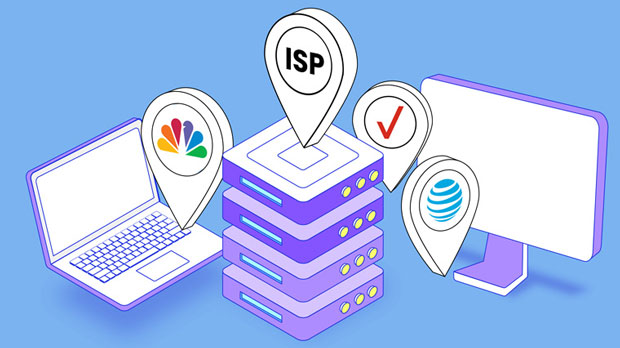How is the bandwidth limitation of the NetNut Socks5 proxy? How does it compare to PyProxy?
NetNut socks5 proxy services provide flexible and high-performance proxy solutions for various use cases, such as secure browsing, data scraping, and maintaining anonymity. However, the bandwidth limitations associated with NetNut can be a critical factor to consider when selecting a proxy provider. In this article, we will analyze the bandwidth constraints of NetNut socks5 proxies and compare them to PYPROXY, another popular proxy service provider. The goal is to provide a comprehensive comparison, focusing on the performance aspects that can directly impact the user's experience, particularly for data-heavy operations and scalability. Understanding NetNut Socks5 Proxy Bandwidth LimitationsNetNut's Socks5 proxy services are well-known for their robust network infrastructure and reliability. However, just like any proxy service, they come with certain limitations, especially when it comes to bandwidth. Bandwidth refers to the amount of data that can be transferred over the network in a given period, typically measured in Mbps (megabits per second) or Gbps (gigabits per second). For users relying on proxy services for high-performance tasks such as scraping large datasets, accessing geographically restricted content, or secure browsing, bandwidth capacity becomes a critical parameter.NetNut typically offers various packages with different bandwidth allocations. The availability of higher bandwidth is usually tied to higher-tier plans, designed for businesses or professionals with extensive data needs. On the lower end, bandwidth might be more limited, which could affect the proxy speed and responsiveness, especially in scenarios involving large data transfers or a high number of simultaneous requests.For general use, NetNut's bandwidth is generally sufficient, but clients seeking to perform large-scale operations may encounter some performance throttling. Users may experience slower speeds, especially when network congestion occurs or when connecting to high-demand servers. Understanding these bandwidth restrictions is crucial for businesses that need to handle large volumes of data efficiently.Performance of PyProxy in Terms of BandwidthPyProxy is another popular proxy service provider known for its performance and scalability. When comparing PyProxy to NetNut, one of the standout differences lies in how both services handle bandwidth limitations and optimize network traffic. PyProxy generally offers competitive speeds, but its bandwidth restrictions can vary depending on the subscription plan. The service is tailored towards those who prioritize speed and efficiency, particularly for applications such as automated web scraping, e-commerce automation, and handling large-scale requests.Unlike NetNut, which offers tiered bandwidth packages, PyProxy usually operates with a more straightforward pricing model, which may or may not include limitations based on data usage. While PyProxy may excel in terms of speed and availability of higher bandwidth in its premium plans, it is important to note that its pricing structure might not always be as flexible as NetNut’s tiered offerings. However, for users that are looking for consistently high bandwidth with minimal throttling, PyProxy might be the better choice, especially for individuals or businesses with specific high-performance needs.Key Performance Differences between NetNut and PyProxyWhile both NetNut and PyProxy provide reliable proxy services, their performance in terms of bandwidth can differ significantly based on various factors such as traffic management, server infrastructure, and user load. Here’s a breakdown of key performance differences:1. Bandwidth Allocation and Pricing - NetNut's pricing model is based on tiered bandwidth allocations, meaning users can select the bandwidth that fits their needs. However, those requiring higher levels of bandwidth will have to opt for more expensive plans. The limitation in bandwidth on lower-tier plans can lead to slower speeds and throttling during periods of high demand. - PyProxy, on the other hand, often provides unlimited bandwidth for users with its premium plans. This results in fewer instances of throttling and consistent performance even during peak usage times. This can be particularly valuable for users needing uninterrupted performance for high-volume data operations.2. Speed and Latency - NetNut generally provides good speed, especially in regions with low network congestion. However, bandwidth limitations on lower-tier plans might lead to fluctuating speeds, which could affect real-time data requirements. - PyProxy tends to maintain higher speed consistency across all plans. Their infrastructure is optimized to handle large-scale operations, ensuring minimal latency and faster response times, which is essential for tasks like web scraping and data mining.3. Scalability - NetNut’s tiered approach makes it an attractive option for businesses with scalable needs. Users can start with a smaller bandwidth plan and scale up as needed, though scaling may incur additional costs. - PyProxy is also designed for scalability, but its focus on high bandwidth in premium packages might provide an edge for users needing instant performance upgrades. PyProxy’s ability to handle large requests without significant performance drops makes it a strong contender for larger enterprises.When to Choose NetNut over PyProxyNetNut might be a better choice for users with specific geographical requirements or who need a tailored proxy experience. Its tiered pricing model and reliable infrastructure make it suitable for businesses that want to control their bandwidth allocation based on budget or operational needs. Additionally, users in certain locations might find NetNut’s regional proxies to offer better connectivity.Moreover, NetNut is ideal for users who do not have extremely high bandwidth demands but still need a solid and dependable proxy service. If your operations require a smaller number of requests with occasional heavy traffic, the lower-tier plans could be enough without experiencing significant throttling.When to Choose PyProxy over NetNutFor users who prioritize uninterrupted high-speed access and scalability, PyProxy is likely the better option. Its flexible premium plans offering high or unlimited bandwidth can handle intense data requests, making it a top choice for web scraping, SEO monitoring, or large-scale automated tasks. If performance and speed are your primary concerns, PyProxy excels in these areas, especially for heavy-duty operations.Additionally, PyProxy is a good choice for businesses needing rapid deployment and minimal latency across regions. With its focus on speed optimization, PyProxy supports high-volume, real-time operations with little to no throttling.In conclusion, both NetNut Socks5 proxy and PyProxy offer unique benefits, but their performance and bandwidth limitations vary significantly based on the user’s specific needs. NetNut provides reliable proxy services with tiered bandwidth options, making it a suitable choice for businesses with controlled data needs. However, for users requiring consistent high-speed performance and scalability, PyProxy stands out with its premium packages and ability to handle large-scale operations with minimal throttling.Choosing the right proxy service ultimately depends on your use case. If you need flexible pricing with the option to scale your bandwidth based on usage, NetNut might be a good fit. On the other hand, if you’re seeking uninterrupted high-speed access with minimal latency, PyProxy might be the better choice for ensuring optimal performance in high-demand environments.
2025-02-25

























































